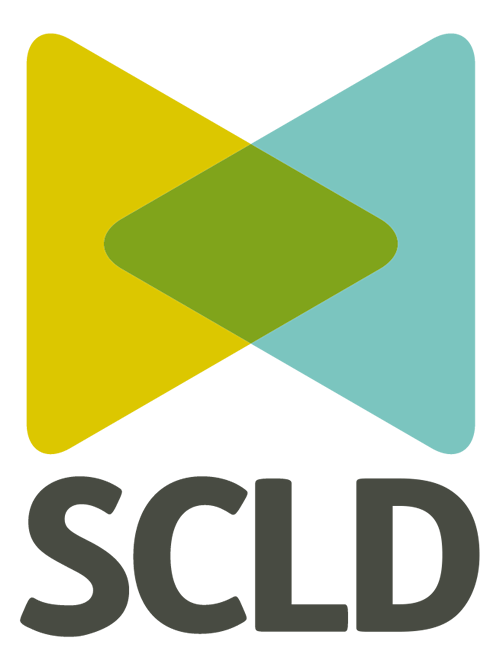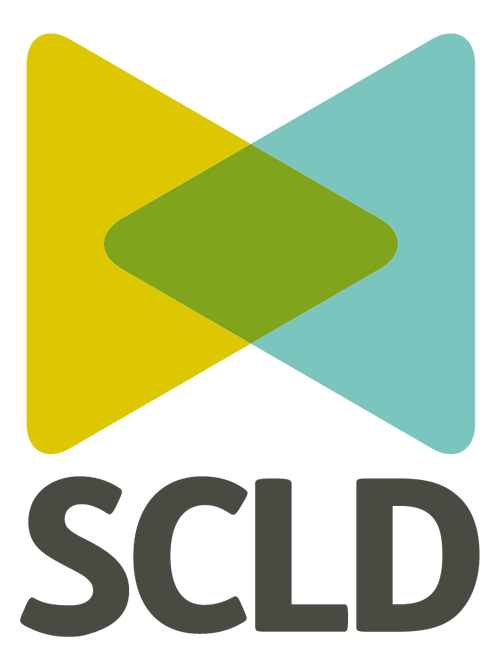
Communities of change
SCLD has recently published the final two reports exploring the results of the “How’s Life?” Survey of people with learning disabilities in Scotland: My Home, My Community and My Time, My Choice? In his guest blog marking the launch of the reports, Dominic Jarrett (North Ayrshire Health and Social Care Partnership) explores the importance of the stories we hear and the communities we create when it comes to positive change for people with learning disabilities…
“People thrive on connections. But the opportunity to make and sustain connections is not enjoyed equally across society. People are marginalised for a whole host of reasons, some of which can be fundamentally inherent to their identity (e.g. ethnicity, sexuality) while others may be acquired or evolve over the life course (e.g. mental health issues, dementia, addiction).
All of these disparate reasons carry distinct challenges, but also overlapping ones. A need for greater understanding from others, and for more time for that understanding to emerge, might be one. Communication which acknowledges as a starting point that not everyone has good literacy skills and 20:20 vision, might be another. Physical spaces within communities and buildings that are designed (and crucially, maintained) to enable free movement for all, and maximise a sense of agency, as opposed to diminishing and isolating, might be another. Services which look genuinely at the entirety of someone’s life and situation as opposed to focusing on narrow elements might be another.
The Scottish Commission for People with Learning Disabilities (SCLD) have produced and commissioned a host of valuable resources over the years which have explored these issues from the perspective of people with learning disabilities. The Building Bridges to a Good Life report (2016) is one of many that have addressed the fundamental issue of community inclusion, and the ways in which people with learning disabilities are thwarted or denied their rights in relation to this.
The preface to that report, written by Cormac Russel, described the critical importance of paying sufficient attention to the building of supportive and inclusive communities, as a necessary accompaniment to person centred practice with individuals.
The publication of the My Home, My Community, and My Time, My Time Choice reports draw into focus much that is positive about the lives of, and opportunities enjoyed by, people with learning disabilities today. But they also highlight the continuing need for improvement, much of which links back to that notion of building inclusive communities, and place based working.
Within the My Home, My Community report, 36% of respondents indicated that they did not feel safe within their local area.
This, combined with the availability of good transport links, impacted on how people felt about their homes, which in turn demonstrated a relationship with overall reported levels of life satisfaction: 85% of those who were happy with their home reported high levels of satisfaction with their lives, compared to only 36% of those who were not happy with their home.
It’s sobering that we continue to live in a society that requires reminding that people with learning disabilities are people, first and foremost, and that they have the same needs, rights and aspirations as everyone else. That their response to an unsatisfactory home (all too frequently, not of their own choosing) and unsafe community would be the same as everyone else’s. That they value connecting with partners, peers and family in the same way as everyone else; and our collective surprise at their shared humanity continues to create a need for deliberate and committed action, to create space within services and communities for that humanity to be recognised and respected.
It’s sobering that we continue to live in a society that requires reminding that people with learning disabilities are people, first and foremost, and that they have the same needs, rights and aspirations as everyone else.
There is a myriad of inspiring work across Scotland, the UK, and internationally, that demonstrates what can be achieved through such activity.
In North Ayrshire, staff and partners working within and alongside our day opportunities service have had the immense benefit of linking with peers from Falkirk, Perth and Kinross, and West Lothian, as part of a learning collaborative facilitated by Healthcare Improvement Scotland (HIS). Within that, we have had the opportunity to hear from national organisations and the other HSCPs within the collaborative regarding how they are supporting the growth of more inclusive communities, and the contribution a refreshed day opportunities offer can make to this.
For our part, we have had the chance to share some of the approaches we have taken in North Ayrshire to address these issues. Our investment in Neighbourhood Networks has constituted a major part of this.
Starting in the Garnock Valley, we commissioned Neighbourhood Networks to support individuals to link with each other, develop new life skills, and benefit from the opportunities available within their community. This first successful network was followed by the establishment of a second in the Garnock Valley, and subsequently others in Largs and Stevenston. We have seen real benefits from this work in the friendships it has fostered, the new skills it has nurtured (including independent travel), and the access it has enabled to local groups, such as a local community garden.
Neighbourhood Networks have also explored the establishment of a group of their members with a remit and skills around helping community groups and other resources to think about their accessibility. The Active, Connected, Included resources developed by SCLD has been immensely helpful in this work, by providing a practical foundation around which to base the messages promoted by this group.
The publication of the Active, Connected, Included resources presented a prime opportunity to seed new thinking regarding accessibility across our community facilities, and communities more broadly. As a first step, we circulated a copy to all libraries and community centres across North Ayrshire. While we included within each resource a request that people give us feedback on their use of it, we accept that we may never hear directly about its impact in this way. But we also trust that making the resource available via these routes is a contribution, however small, to raising awareness.
Another opportunity for the promotion of the Active, Connected, Included resources arose via the Communities Mental Health and Wellbeing fund. In collaboration with the Third Sector Interface partner administering the fund for North Ayrshire (Arran Community and Voluntary Service) we ensured that all those awarded funding were provided with a hard copy of the resource.
Within the award letter which accompanied this, we highlighted the relevance of the resource not just as a prompt in relation to the inclusion of people with learning disabilities, but in relation to accessibility issues in general. We are already seeing the benefits of this, with one group sharing the work they were undertaking to ensure the inclusion of people with learning disabilities in their activity, and others seeking more information regarding the resource and how they can work with it. Both responses are encouraging in that they evidence a real engagement with the material.
It is telling that the Active, Connected, Included resources makes good use of scenarios and case studies throughout. Within the Day Opportunities Learning Collaborative we are linked to, HIS and others have frequently highlighted the power of stories for communicating change and motivating individuals and communities.
It is with this in mind that Neighbourhood Networks, with the support of the local team involved in the learning collaborative, obtained funding to deliver an exhibition based around the life stories of people with learning disabilities. The work is still in its early stages, but is seeking to involve individuals from both the various Neighbourhood Networks in North Ayrshire, and our day opportunities service, Trindlemoss. The hope with this work is that it will raise awareness regarding people with learning disabilities, but perhaps also prompt recognition of a shared identity or challenges across different groups.
People thrive on connections, and stories connect us. They help us to understand, to find echoes of our own experiences, to be inspired to action, lost in reverie, or comforted in adversity, among a myriad other things. Good research should tell a story. Good supports should have the patience to listen to old ones, and help forge some new. Good communities should make space for the stories of all, and for the shared experiences that underpin them. Within the foreword by Cormac Russel mentioned above, he states:
If the learning disability movement joined with other movements to advocate for a place-based approach across Scotland, the impact would be transformational.
When we connect with others, we create something amazing. Not a pathway, not a service, but a community. A shared community, one with plenty of room for members and stories, old and new. That’s something worth taking time for.”
Dominic Jarrett is the Learning Disabilities Development Manager at the North Ayrshire Health and Social Care Partnership.


